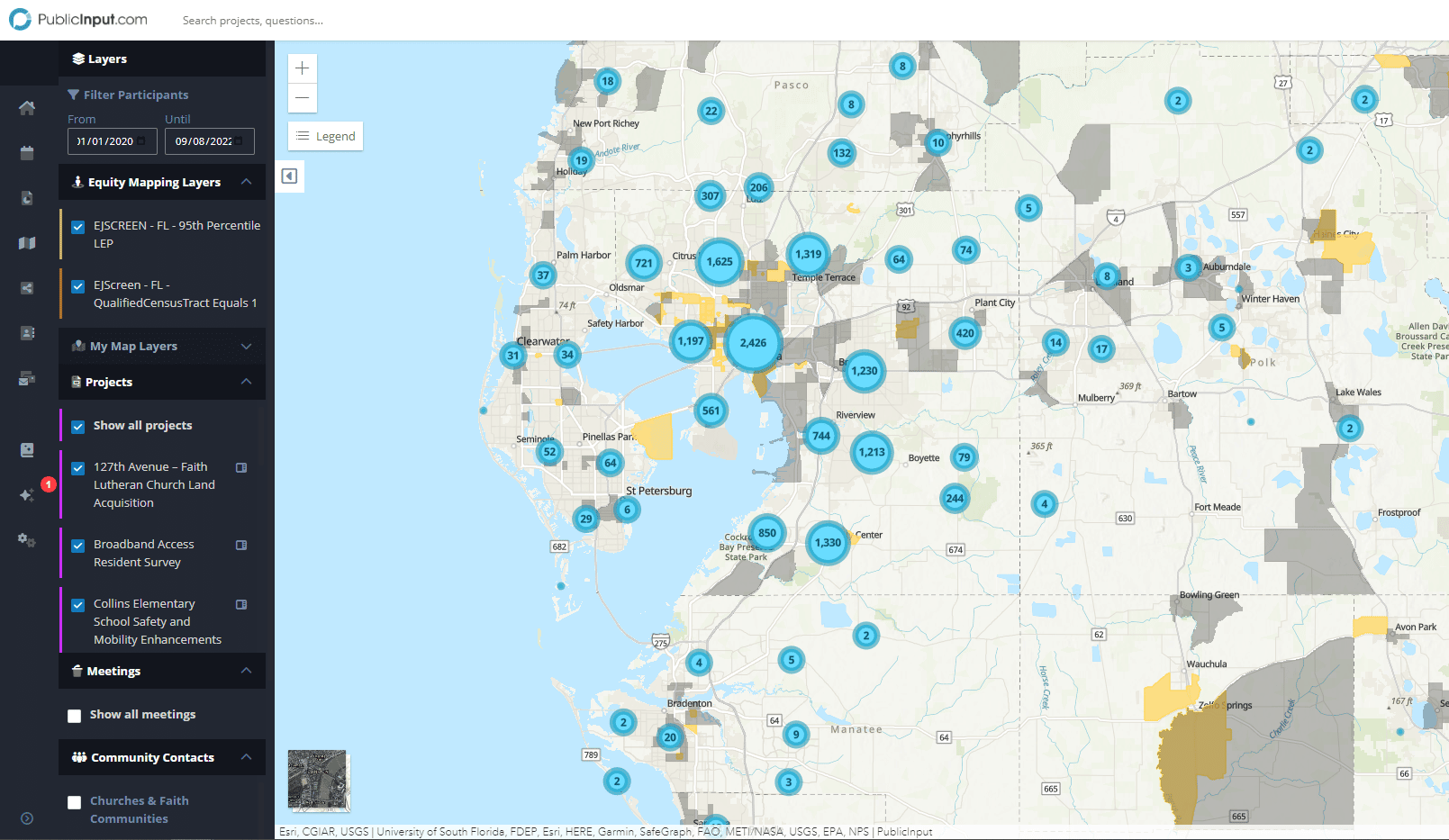
The Environmental Justice Guide
It is our hope that this guide will be used as a go-to resource for publicly available data and community engagement platform solutions designed with equity in mind.
Download: Environmental Justice: A Public Engagement Practitioner Resource Guide
What is Environmental Justice?
Environmental Justice (EJ) is the fair treatment and meaningful involvement of all people regardless of race, color, national origin, or income with respect to the development, implementation and enforcement of environmental laws, regulations and policies.
How community engagement informs EJ analysis
With a central goal of identifying and addressing disproportionate and disparate impacts to historically marginalized communities, EJ analysis outcomes are only as strong as the input that informs them.
The PublicInput Environmental Justice Guide is designed to support state and local governments in their efforts to encourage diverse participation in their community engagement efforts.
What data is available to support Environmental Justice analysis?
There are a wide range of publicly available sources of community data that aid community engagement practitioners in their efforts of identifying, reaching, and engaging stakeholders. The PublicInput Environmental Justice Guide includes a curated list of publicly available resources.
How does Equity Mapping bring all of your community engagement data together?
The availability and accessibility of public data represents endless opportunities for engagement practitioners. Although, all of these options can sometimes feel disparate and overwhelming. To mitigate this problem, PublicInput has developed options that make weaving equity into engagement strategy easy.

Above Screenshot:
PublicInput administrative dashboard view of Hillsborough County, FL participant data overlaid with local community data.
Want to learn more about how to facilitate a more equitable engagement approach in your home community? Download your free copy of the PublicInput Environmental Justice Guide today!



